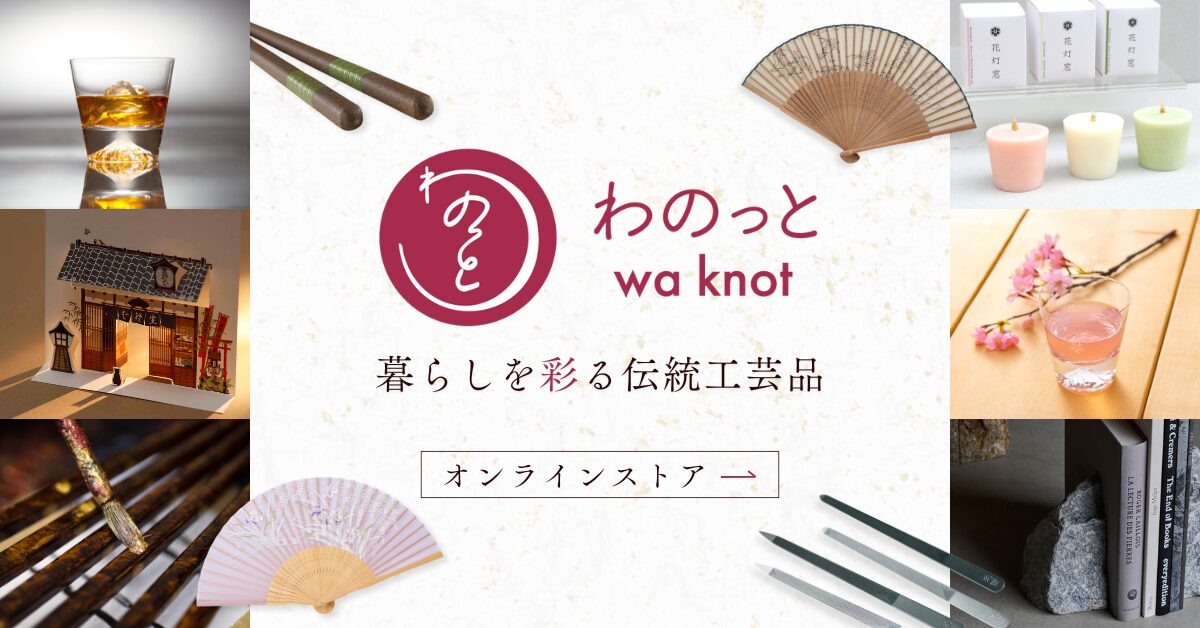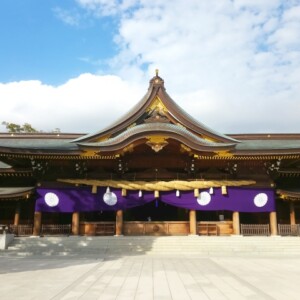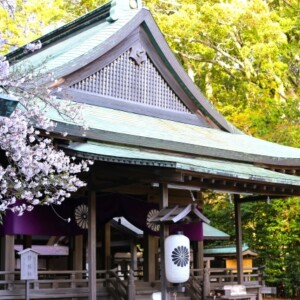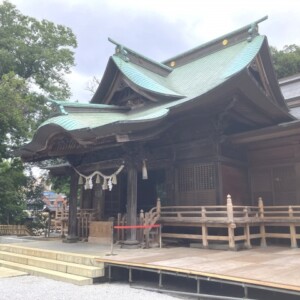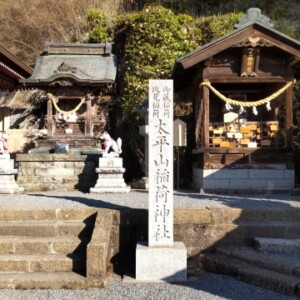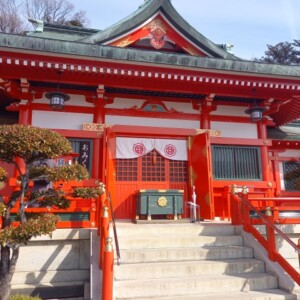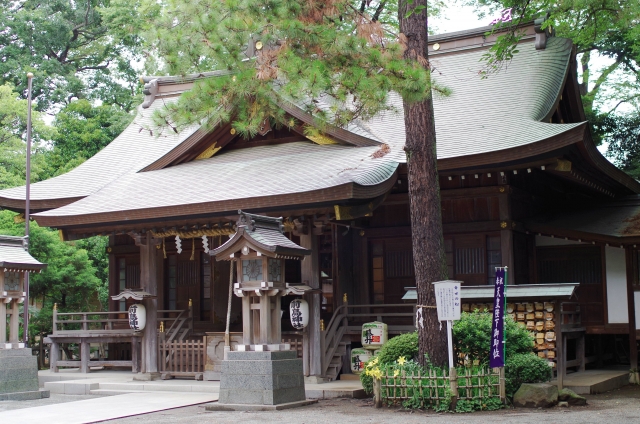
Maetori-jinja Shrine|Complete guide to the history, highlights, and worship information of this historic shrine
Maetori Shrine, located in Hiratsuka City, Kanagawa Prefecture, is a venerable old shrine with a history of more than 1,000 years as one of the thirteen Engishiki-naisha shrines in Sagami Province, listed in the Engishiki Shinmeicho (Engi Shiki Shinmeicho) of 927 (the fifth year of Ensho). It is widely known as a god of learning, and in recent years, it has attracted attention for its blessings to help people find employment.
Outline and basic information about Maetori Shrine
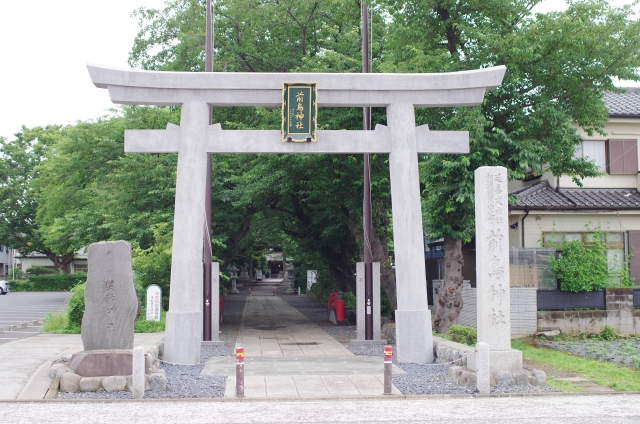
Mae-tori Shrine is a prestigious shrine, one of the four shrines in Sagami Province and one of the five Sagami shrines participating in the Kunifu Festival, a traditional festival of the former Sagami Province held every year on May 5 at Kamijariyama in Kunifu Hongo, Oiso Town. The location name “Shinomiya” is said to be named after the shrine, and the shrine has been well known as the center of the community.
History and Origin
Although the exact date of the shrine’s founding is unknown, it is mentioned in the Sagamiguni (Sagami Province) seal tax trade account book of 735 as “Sakitori-go, Osumi-gun” (大住郡埼取郷). It is thought that the shrine was built before the Nara period (710-794) by a group of clansmen from the Kinai period (710-794) who moved to this “Sakitori” area, and enshrined the deity in a clean place in memory of his legacy.
There is a theory that the shrine name “Sakitori” is derived from “saki” and “saki”, which are synonymous with a cape or cape protruding into the Sagami River, and that the shrine name was taken from this. Until the Edo period (1603-1867), the company name was used variously as “Sakitori,” “Saikitori,” and “Mae-tori,” but today the company name “Mae-tori” is said to be used based on the Engishiki Shinmei-cho (Engi-shiki Shinto name book).
During the Kamakura period (1192-1333), the shrine was revered by the shogunate, and in August 1192, a votive offering of a sacred horse was made to pray for the safe delivery of Masako, wife of Minamoto no Yoritomo, and in 1212, the shogunate designated the shrine as a prayer center for the shogunate. In November 1591, Tokugawa Ieyasu, who became lord of the eight provinces of the Kanto region, donated 10 koku of red seal land to the shrine in order to pray for the longevity of his military fortune.
Deities and Benefits
Three deities are enshrined at Maedori Shrine. Ujino Wakiratsuko no Mikoto, god of learning and virtue. Oyamakui no Mikoto, god of activity and good fortune. Yamatotakeru no Mikoto: God of safety and protection.
The main deities, Usuwakaro-no-mikoto and Yamatotakeru-no-Mikoto, were learned from the Baekje prince A Naoki and Dr. Wangin, who were Usuwakaro-no-mikoto’s teachers when he was a prince. For this reason, he is revered as the god of learning.
It is especially noteworthy that he is treated not only as a god of learning, but also as a god of employment. The shrine is also regarded as a god of employment, as well as a god of learning, because the development of industry has increased the number of jobs available to people. Since “sakitori,” the name of the shrine, means “to get ahead,” Mae-tori Shrine is popular among job hunters because of the word “sakitori,” meaning “to get ahead” or “to get an unofficial job offer first.
Highlights and Features of Mae-tori Shrine
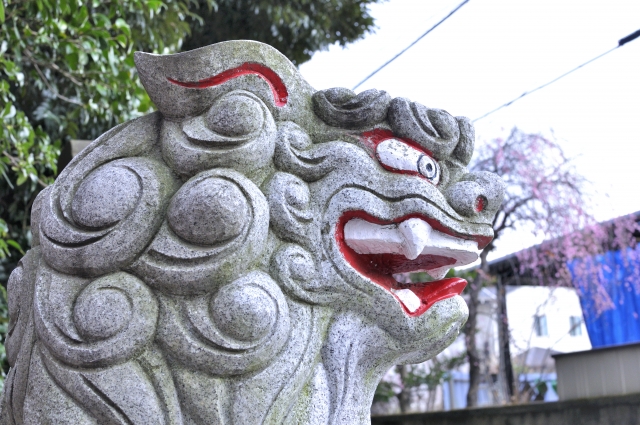
The precincts of Maetori Shrine are filled with a solemn atmosphere befitting an ancient shrine. The shrine grounds are lined with large cherry and yakeyaki trees, as well as ancient cedar trees. The precincts of Maetori Shrine in Yonomiya are lined with cherry trees, large burning cherry trees, and old Japanese cedar trees, which are designated as Hiratsuka City Preserved Trees, giving the area an atmosphere befitting an ancient shrine.
Architectural and Structural Attractions
The shrine pavilions of Maetori Shrine have a calm appearance that evokes a long history. The fact that “Sakitori Shrine” is still used on the flat plaque in the hall of worship and “Mae-tori Shrine” on the stone monument with the shrine name in front of the West Torii Gate shows the historical transition of the shrine.
Several precinct shrines are also located within the precincts of the shrine, and the Kobe Shrine is built on the right side facing the Maetori Shrine building. Here, Shinmei Shrine and Yasaka Shrine, previously treated as separate precinct shrines, are enshrined together. Adjacent to Kobe Shrine is Scholarship Shrine, which enshrines the god of learning, the Baekje prince A Naoki and Dr. Ohjin, as well as Sugawara Michizane, the god of learning.
Nature and Scenic Beauty
One of the most attractive features of Maetori Shrine is its rich natural environment. The sacred tree, a large zelkova, is said to be about 300 years old. The sacred zelkova tree located near the water closet is surprisingly said to be approximately 300 years old. There are many other zelkova trees on the temple grounds, but this one stands out as a particularly conspicuous giant.
There is also a special pine tree called “Shiawase-no Matsu” (Pine Tree of Happiness) in the precincts of the temple. It is said that if you find a pine tree with four leaves, you may have a good luck. It is said that if you find a pine leaf with four leaves, it will bring you good luck. Visitors to the temple enjoy looking for these rare four-leaf pine needles.
In spring, the approach to the temple is lined with cherry blossom trees, making the approach a bit of a cherry blossom viewing spot. The entire temple grounds are a space where visitors can experience the beauty of the seasons.
Cultural Properties and Important Collections
A number of valuable cultural assets and treasures are preserved at Maetori Shrine. Many treasures are preserved at Maetori Shrine, including Yayoi earthenware, gold and silver rings, jar-shaped earthenware, masks of the Japanese warrior warrior, astronomical tablet Analects of Buddha, flat plaque of the shrine name, flat plaque of the shrine name, Chinese books mainly containing Analects and 1000-character texts, eaves tiles from the Baekje period, and more.
Particularly noteworthy are the following three ancient rituals that still remain at Maetori Shrine. It is said that they are descended from the festival music brought to Hiratsuka by a man named “Matsuno-ichi” in the Edo period (1603-1868). The basic composition consists of five musicians (flute, gong, large drum, and two shime-daiko), and nine pieces of music, “Yatai (musical float),” “Miya-shoden,” “Shoden,” “Kandamaru,” “Karagaku,” “Kamakura,” “Shichomai,” “Inba,” and “Kizami,” are considered valuable because they have been handed down without the use of a flute and gong.
The annual festival is designated as an important cultural property by Hiratsuka City for the “Jinxing Shrine Entrance Ceremony” and the “Maetori-hayashi and Satokagura” and as a prefectural intangible folk cultural property for the “Sagami Puppet Theater Maetori-za”. These cultural assets tell us that Maetori Shrine is more than just a place of worship, but also serves as the cultural center of the community.
Guide to Worship and Visiting the Shrine

When visiting Maetori Shrine, it is important to maintain proper manners and etiquette out of respect for this sacred place. The precincts of the shrine are visited by many worshippers as a god of learning and employment, and an atmosphere of tranquility and purity is maintained.
Worship Etiquette and Manners
Worship at Maetori Shrine is conducted in the same manner as at ordinary shrines. Bow before the torii gate. After entering the shrine, proceed quietly along the approach to the shrine. The center of the path is considered to be the path of the gods, so walk near the edge of the path.
After purifying your body and mind at the water closet, bow lightly when standing in front of the offering box, and place your offering in the box. After bowing lightly, place your money in the money box and bow lightly before retiring.
The recommended course at this shrine is called the Sanja Matsuri, which involves visiting the Maetori Shrine, the Kobe Shrine, and the Scholarship Shrine together. For more generous benefits, it is recommended to visit these shrines as well.
Annual and Seasonal Events
Various festivals and events are held throughout the year at Maetori Shrine. These include the Teshidan Festival, the Kokufu Festival, the annual grand festival, and other annual events; traditional local events such as the Mugi Shuri Jinji and the Mikoshi Miyaeri Jinji; and events such as the Stationery Appreciation Festival and the Randoseru (school bag) purification ceremony.
One of the most important festivals is the Kokufu Festival, held annually on May 5. It is said to have originated in the Heian period (794-1185), when the provincial governor asked five shrines (Ichinomiya Shrine, Kanryu Shrine, Ninomiya Shrine, Kawago-jinja Shrine, Sannomiya Shrine, Hinata Shrine, Yonomiya Shrine, Maetori Shrine, and Hiratsuka Hachiman Shrine) to gather every year at Kamijariyama (Kunifu, Oiso Town) to pray for national security and a good harvest, together with Sosha Rokusho Shrine.
The annual festival is held in September, and refers to the procession of the Omikoshi, a large portable shrine that has crossed the surrounding area, back to the Company’s premises in the evening of September 28, from the Omotesando entrance to the front of the hall of worship. During the procession, a white rope is tossed and tied to the warabi-te (bracken) of the portable shrine, which is a highlight of the festival.
The Mugi-buri ritual is held on May 5 for the Kokufu Festival, and on September 27 for the Gyoimiya Festival (Yoimiya). It is held prior to the departure of the portable shrine. The portable shrine is set up in front of the shrine pavilion, and the attendants sit side by side on either side. After the priests perform the ritual prayer, the chief of Ujiko (children) share sake, followed by a feast served on taro leaves on the orihiki (folded mats). After eating the food, the shichei shout and stand up to carry the portable shrine.
In addition, there are also other unique events that are typical of the god of learning, such as the Setsubun Festival, the Stationery Appreciation Festival, and the School Bag Exorcism, allowing visitors to enjoy a wide variety of festivals throughout the year.
Red Seal and Good Luck Charm Information
At Mae-tori Shrine, it is possible to obtain three different red seals at one time, as Mae-tori Shrine, Kobe Shrine, and Scholarship Shrine each have their own red seals. There is also an original red seal book for Mae-tori Shrine, so don’t worry in case you forget your red seal book. You can obtain red seals at the awarding office on the shrine grounds or at the shrine office on the left side facing the shrine pavilion.
As for good luck charms, those related to study and employment are particularly popular. The “Shokatsu-mamori” amulet, which is said to bring good luck in finding a job, is so popular that it attracts inquiries from all over Japan. The “Shokureki Sentaku Mamori” is also believed to bring good luck in obtaining qualifications, and is a reassuring ally for those seeking to acquire national and other qualifications.
The “Tenkoku Mamori” is a talisman that brings blessings for finding a suitable job when seeking employment or changing jobs. How about a Dharma amulet, which has been offered and prayed for six days in front of the shrine, as a souvenir for your loved ones?
If you are too far away to go to the shrine, you can also ask us to send it to you by mail. We can accept amulets and prayers by mail.
Access and usage information

Maetori Shrine is located in Hiratsuka City, Kanagawa Prefecture, and is accessible by both public transportation and automobile. It is a short distance from the station, but can be easily reached by bus.
Transportation Access
By train and bus, from Hiratsuka Station on the JR East Tokaido Honsen line, take the Kanagawa Chuo Kotsu Bus bound for Hon Atsugi Station South Exit, Riverside Mae, Ojin Kogyo Danchi, or Tamura Shako, a 4-minute walk from the Mae-Tori Shrine stop. Take the bus from the north exit of Hiratsuka Station, and it takes about 15 minutes to arrive at the Mae-tori-jinja-mae bus stop.
When accessing by car, it takes about 15 minutes by car from the Atsugi Interchange on the Tomei Expressway. There is also a 1.8-km route via the Ken-O Expressway, from the Sarukawa Minami Interchange to Prefectural Road No. 44.
<Address: 4-14-26 Shinomiya, Hiratsuka-shi, Kanagawa 254-0014
Hours of Admission, Fees, and Parking Information
The precincts of Maetori Shrine are generally open to visitors. Red seals and charms are available at ・・・・8 from 5:00 p.m., and prayers are available at ・・・・9 from 4:30 p.m. to 4:30 p.m.
There is no entrance fee to the shrine, but an additional fee is required if you wish to pray. It is recommended that you contact the shrine in advance for more detailed information on fees.
Parking is available for visitors within the shrine grounds, but it is expected to be crowded during major events such as the annual festival and the Kokufu Festival. Public transportation is recommended on days when large events are held.
Maetori Shrine is always open to traveling to hold festivals. For inquiries or more information, feel free to contact the shrine office by phone, e-mail, or in person.
Reference sites
Official website of Mae-tori Shrine: https://sakitori.jp/
Kanagawa Prefectural Shinto Shrines Agency, Mae-tori Shrine: https://www.kanagawa-jinja.or.jp/shrine/1209203-000/
Shonan Hiratsuka Navi Maetori Shrine: https://www.hiratsuka-kankou.com/spot/sakitorijinjya.html


